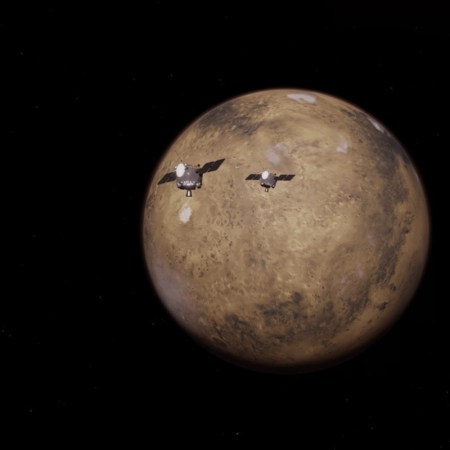After months of attempting to wake up the Opportunity rover on Mars, NASA has finally closed the book on their almost 15-year-long mission on Mars.
Designed to last only about 90 Martian days and travel only 1,100 yards on the Red Planet, the Opportunity rover went on to explore Earth’s dusty neighbor for over 14 years, zig-zagging nearly 30 miles across the planet.
One of the most successful and enduring feats of interplanetary exploration, our @MarsRovers Opportunity is at an end after almost 15 years exploring the surface of Mars. Designed to last just 90 Martian days, here’s a look at this record-setting mission: https://t.co/erVYRlyIOm pic.twitter.com/VEY0KbLxyz
— NASA (@NASA) February 13, 2019
“For more than a decade, Opportunity has been an icon in the field of planetary exploration, teaching us about Mars’ ancient past as a wet, potentially habitable planet, and revealing uncharted Martian landscapes,” Thomas Zurbuchen, associate administrator for NASA’s Science Mission Directorate, said in a statement. “Whatever loss we feel now must be tempered with the knowledge that the legacy of Opportunity continues – both on the surface of Mars with the Curiosity rover and InSight lander – and in the clean rooms of JPL, where the upcoming Mars 2020 rover is taking shape.”

Last year a dust storm caused the rover to go dark after its solar panels were unable to suck energy up from sun. Once the storm passed, NASA was unable to wake the rover up.
“We have and will continue to use multiple techniques in our attempts to contact the rover,” John Callas from NASA’s Jet Propulsion Laboratory said. “These new command strategies are in addition to the ‘sweep and beep’ commands we have been transmitting up to the rover since September.”
Unfortunately, NASA’s efforts weren’t enough and the rover has remained silent and nonfunctional.
Opportunity rover led a grand life on the Red Planet. More than 14 years on Mars allowed the rover to achieve some amazing things. Some of those achievements include a one-day Mars driving record, when it traveled 721 feet and has returned more than 217,000 images, including 15 360-degree color panoramas to Earth. The rover exposed the surfaces of 52 rocks to reveal fresh mineral surfaces for analysis.

Opportunity also found hematite, a mineral that forms in water, and discovered “strong indications at Endeavour Crater of the action of ancient water similar to the drinkable water of a pond or lake on Earth,” NASA said.
The Opportunity rover’s legacy is firmly in place as the Mars InSight lander, which touched down on Mars last fall, is now beginning its research as the Curiosity rover continues to explore Mars’ Gale Crater.
“What… I’ll cherish most is the impact Opportunity had on us here on Earth,” Callas told NASA. “It’s the accomplished exploration and phenomenal discoveries. It’s the generation of young scientists and engineers who became space explorers with this mission,” he said.
NASA hopes to take humans to Mars by the 2030s.
Thanks for reading InsideHook. Sign up for our daily newsletter and be in the know.


















